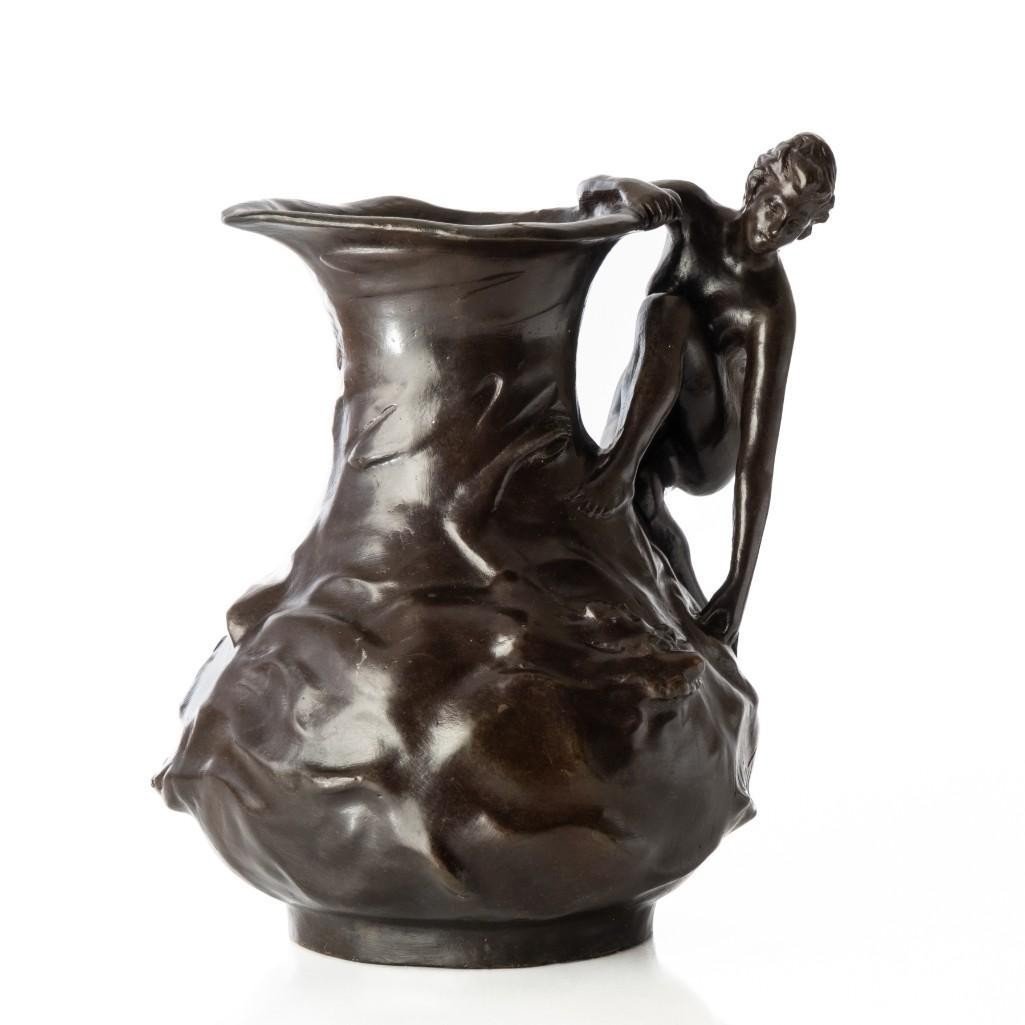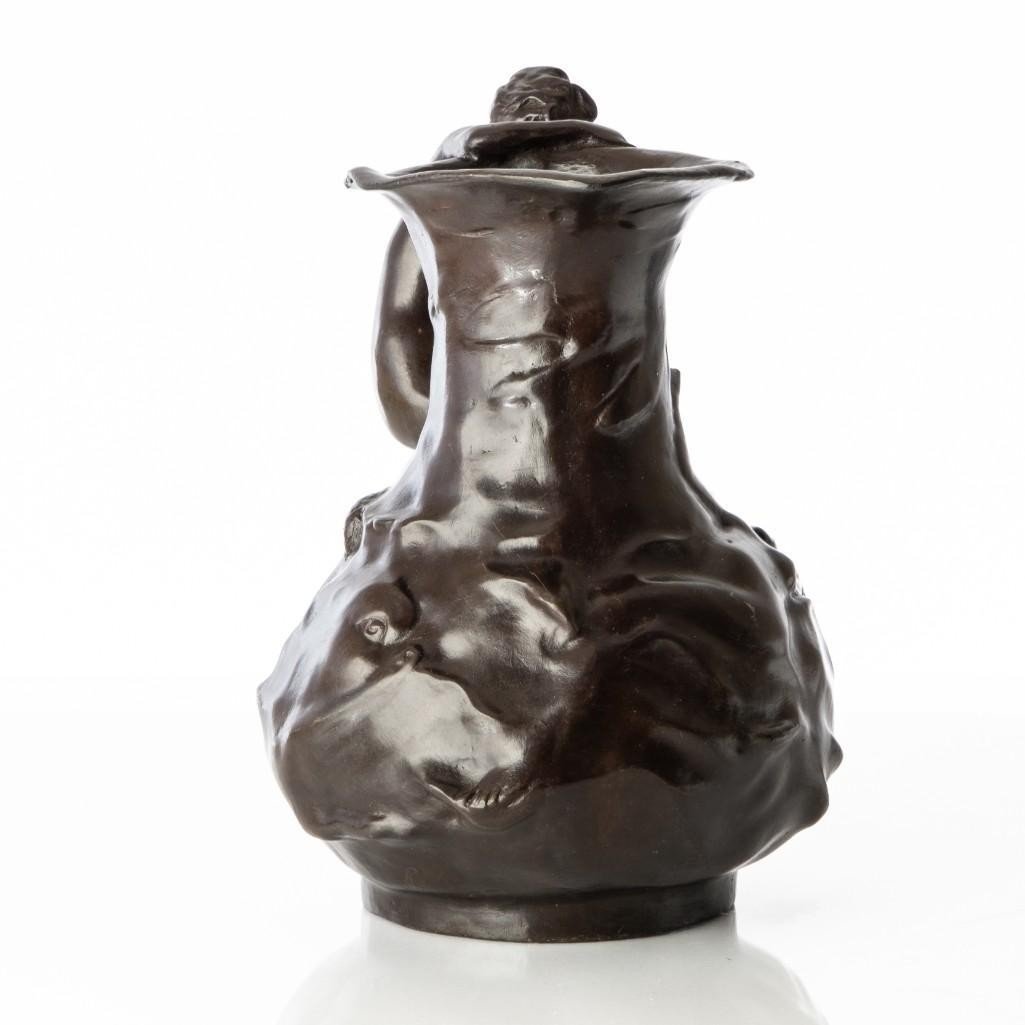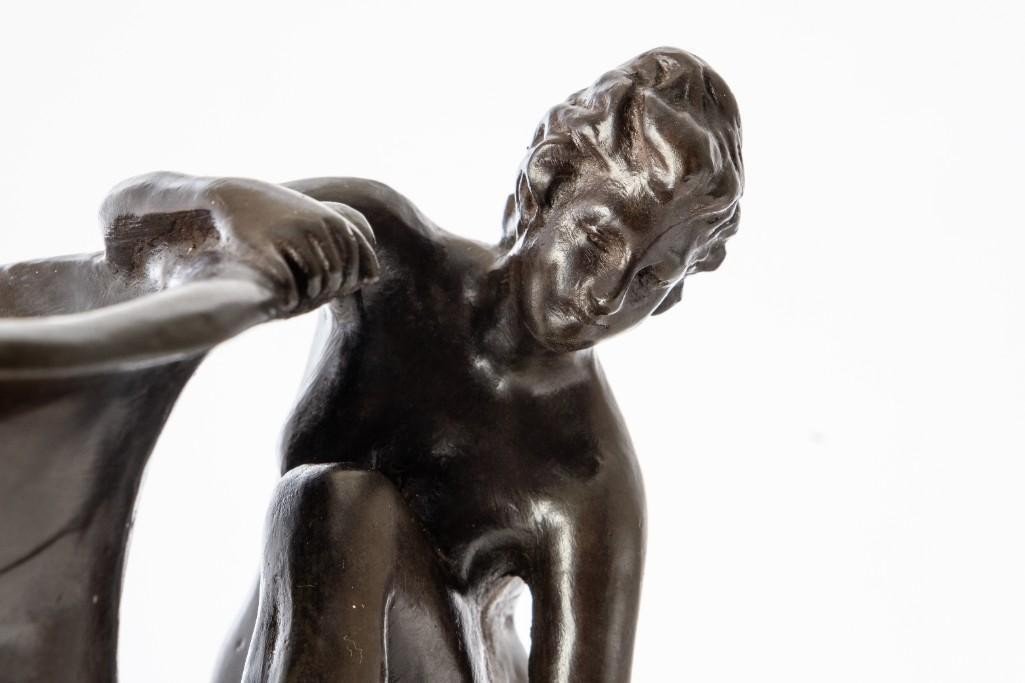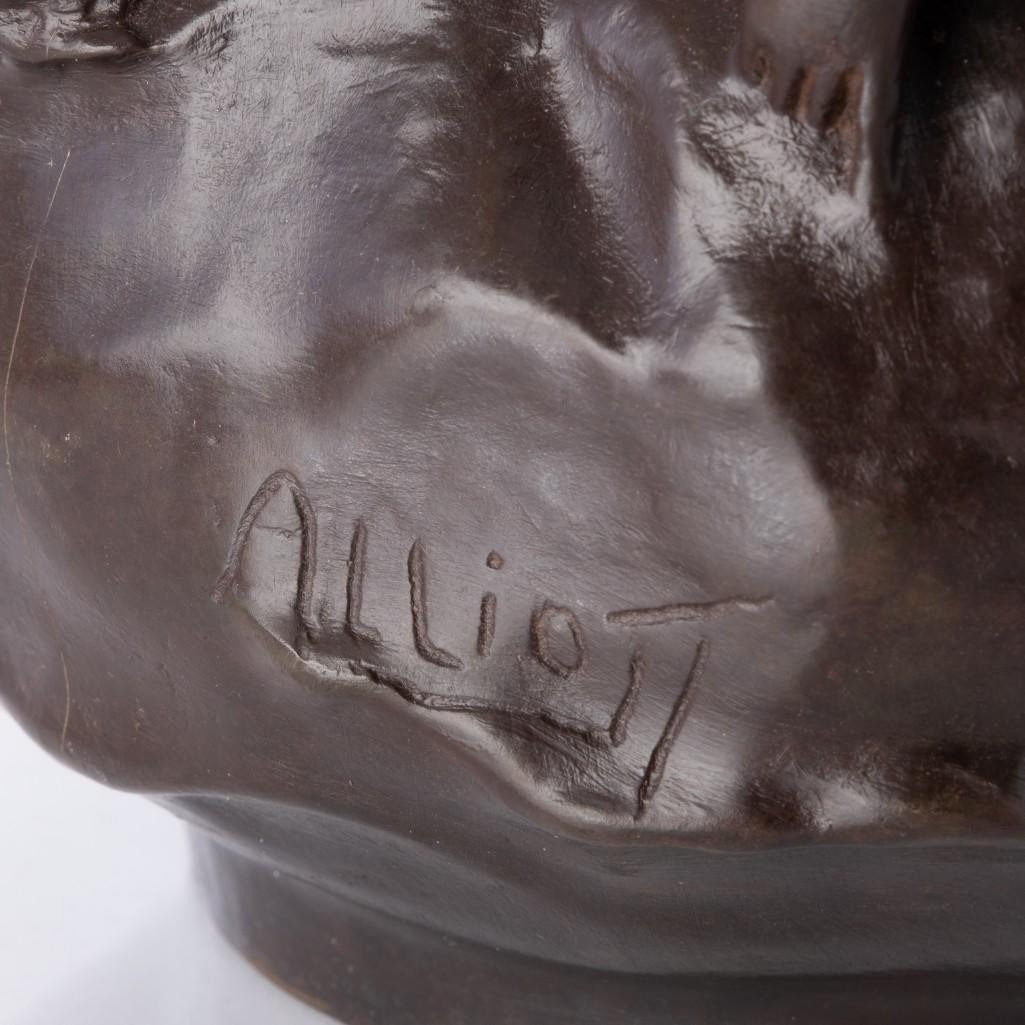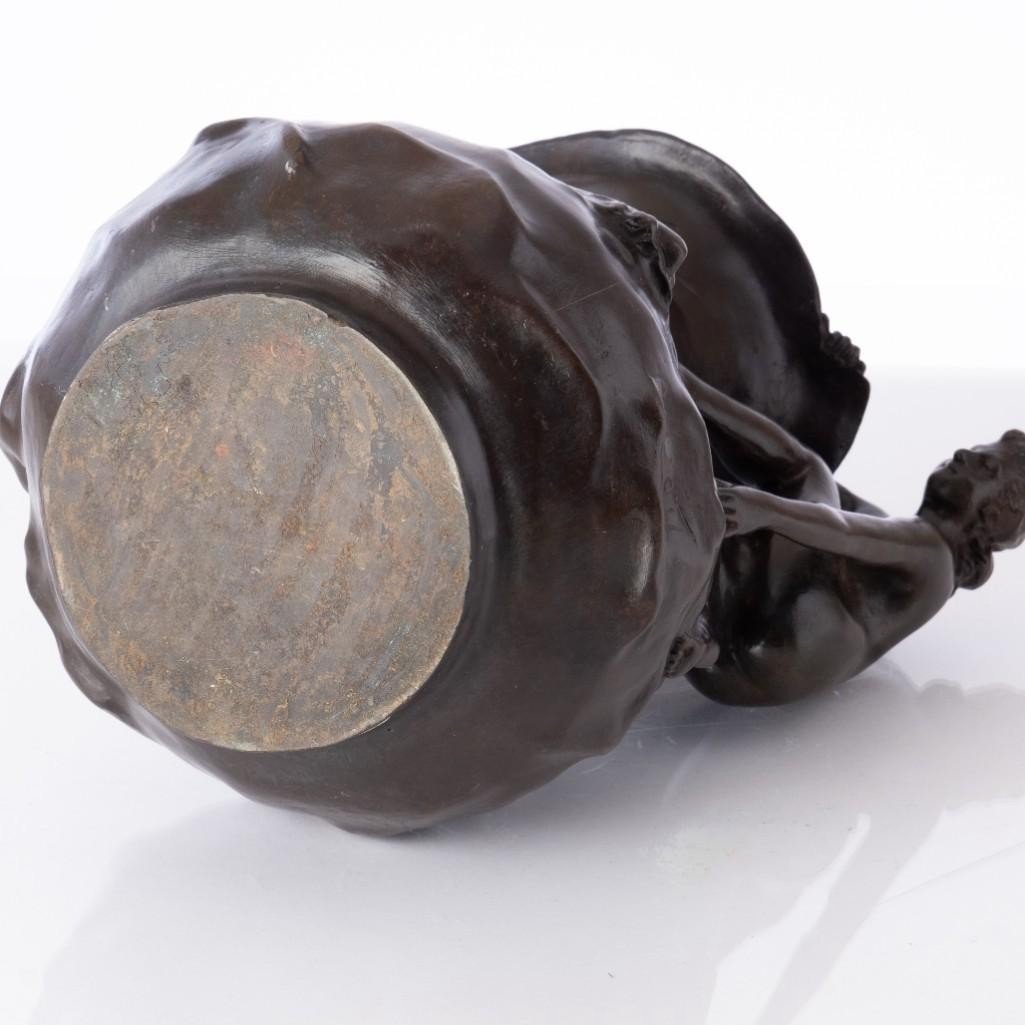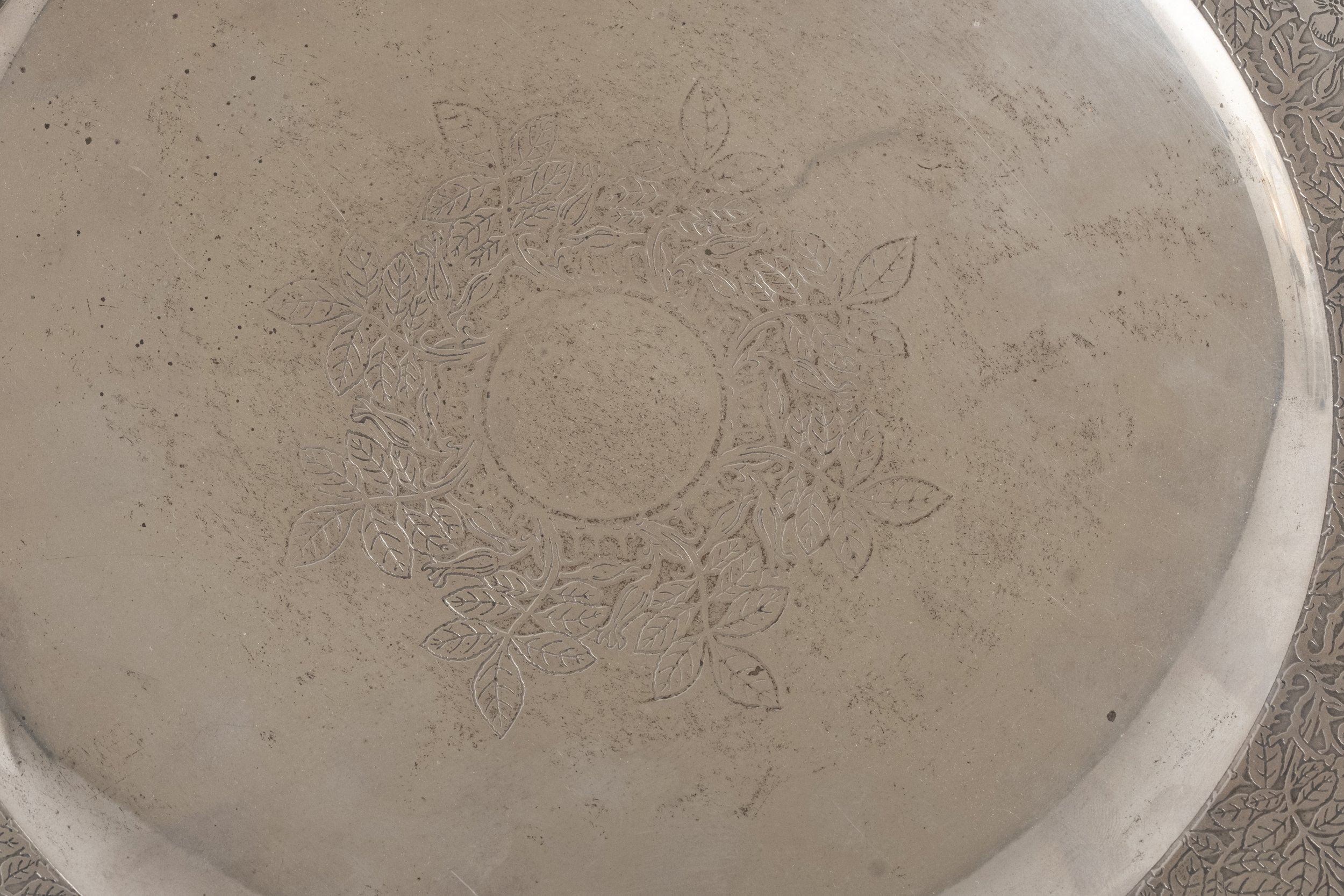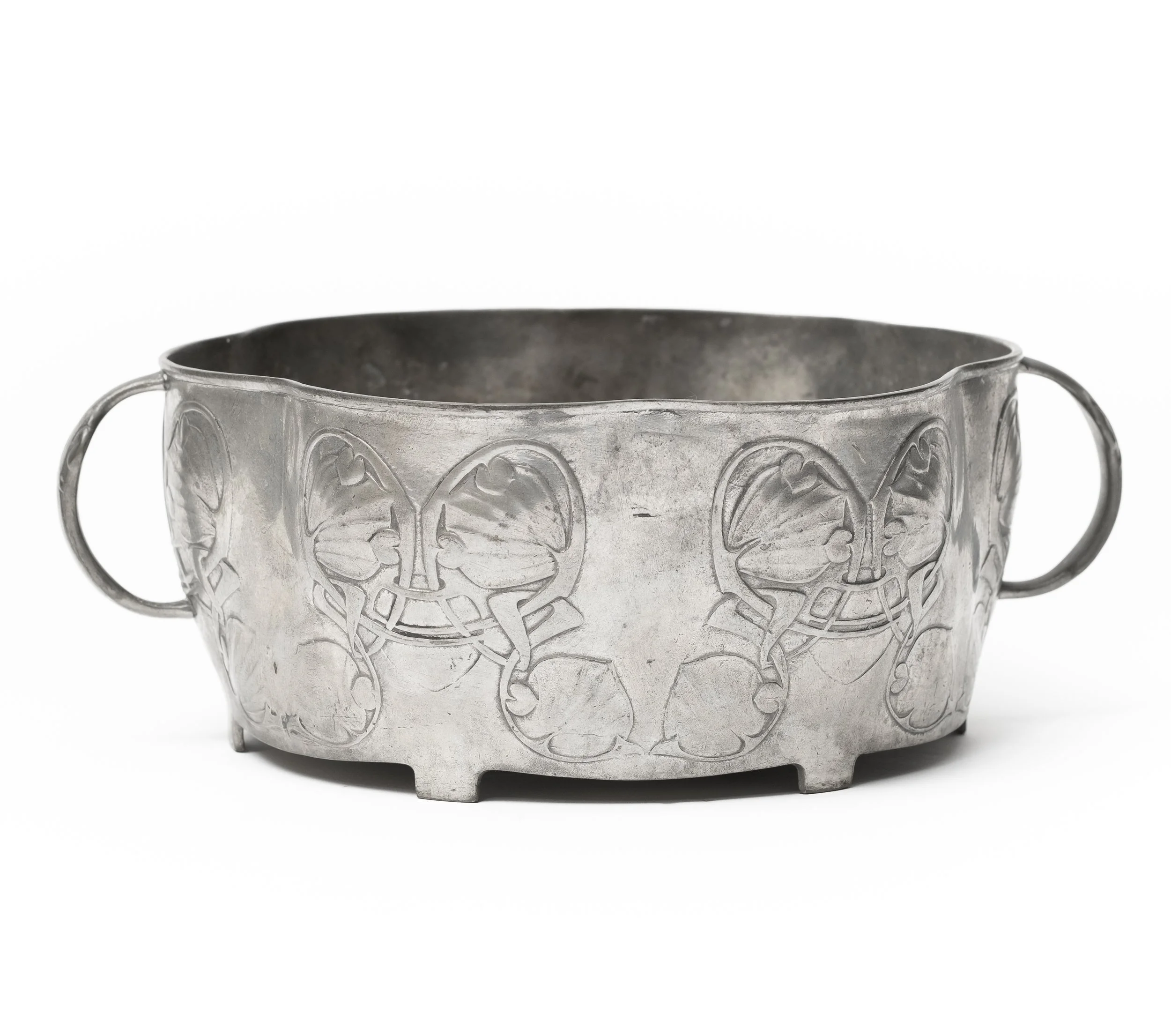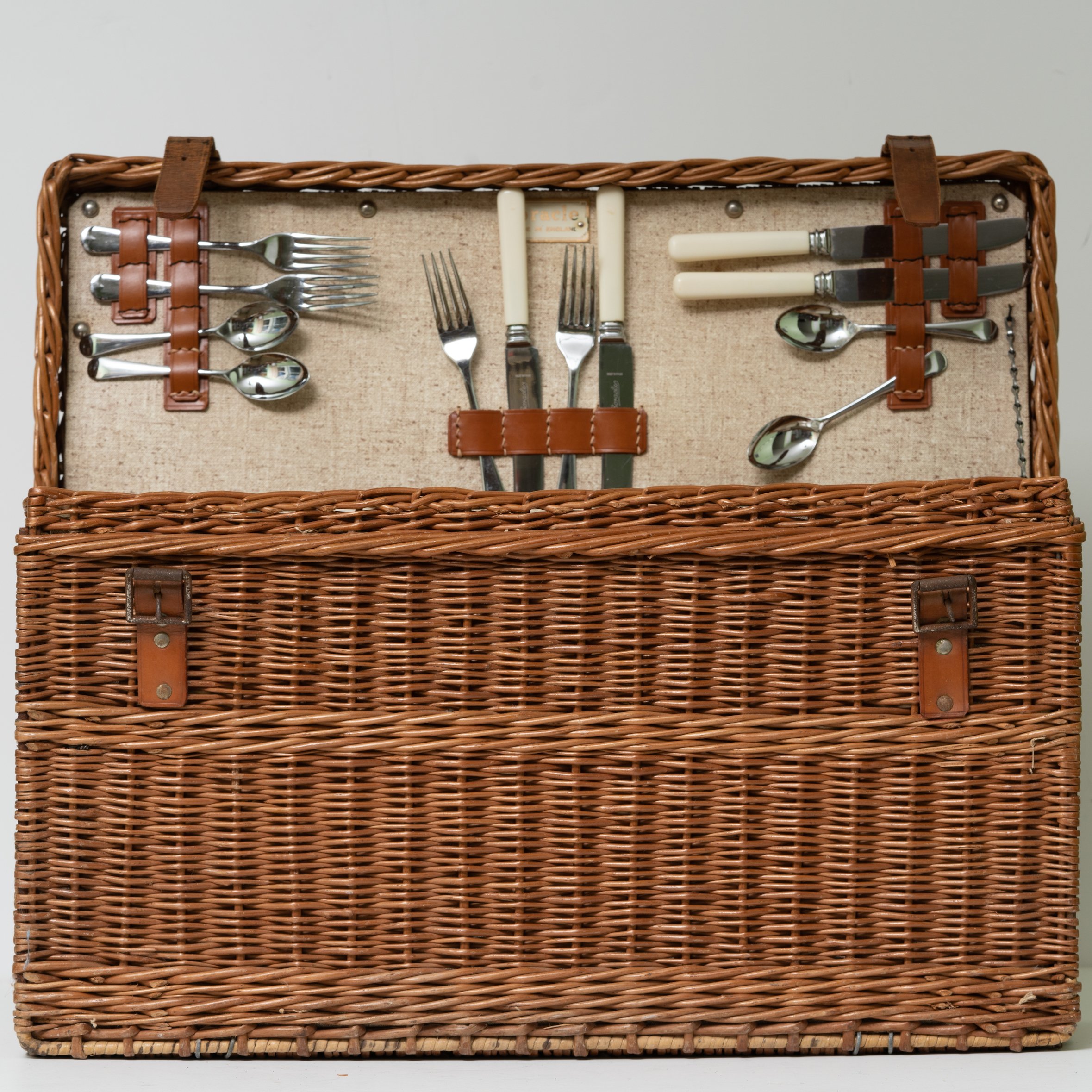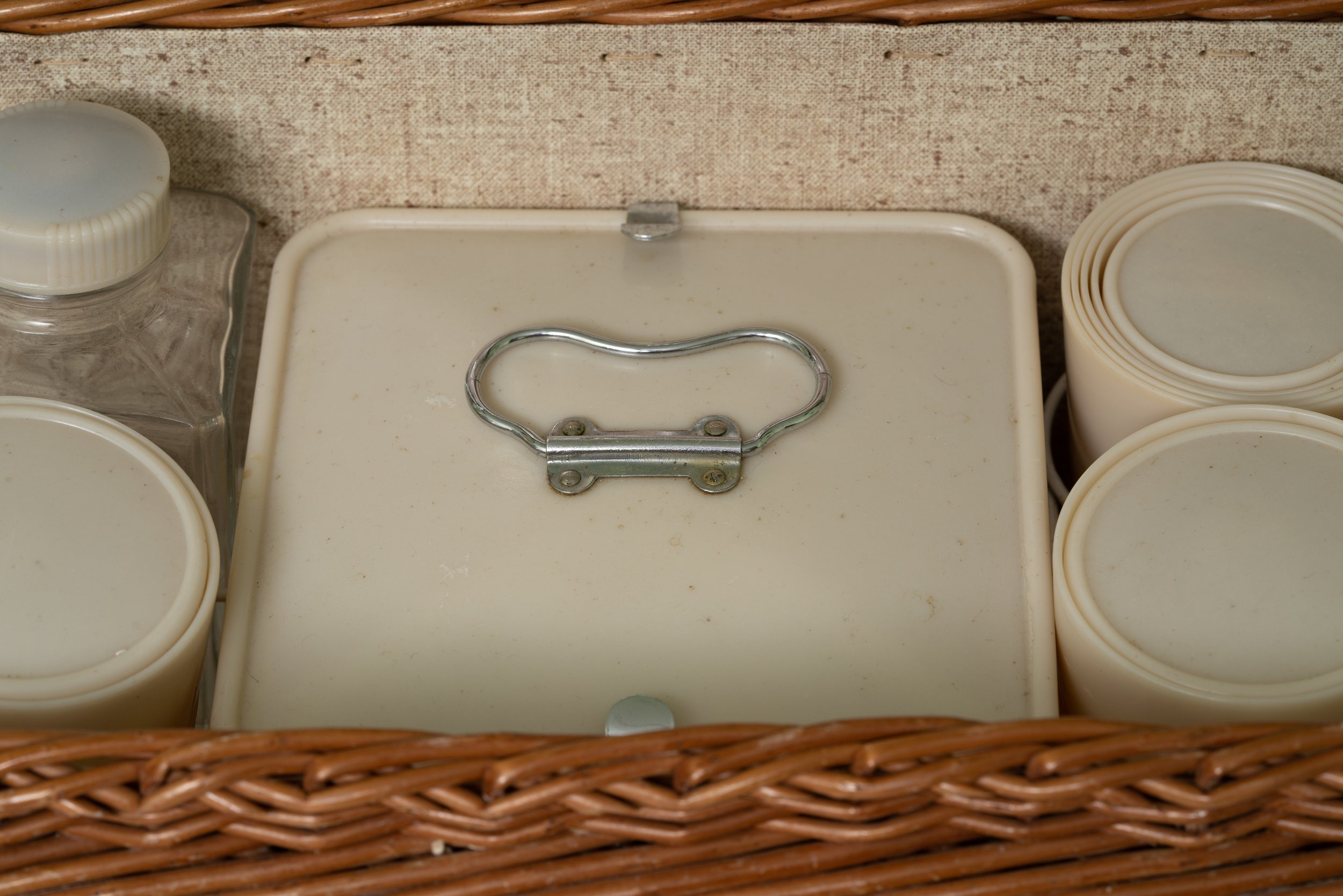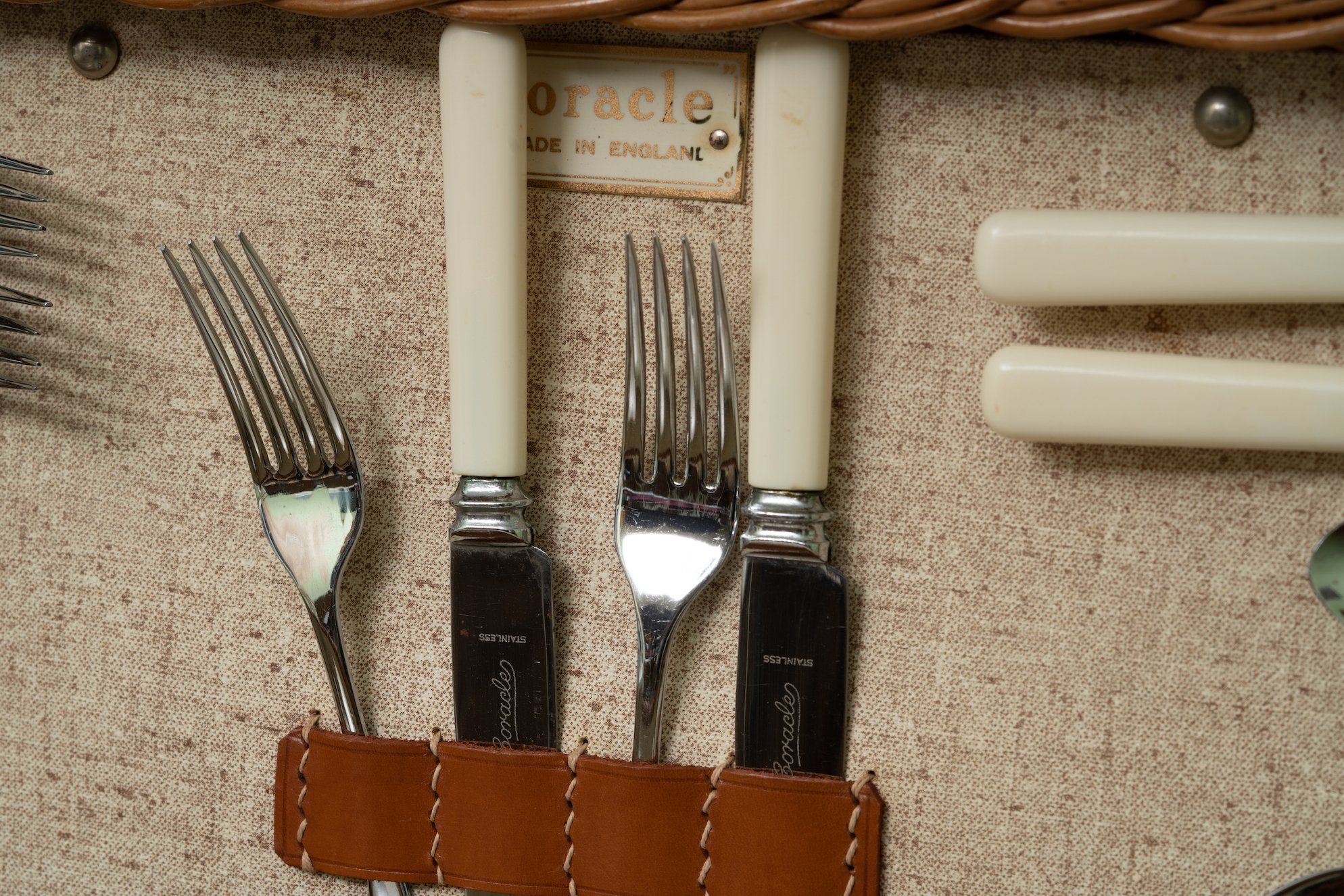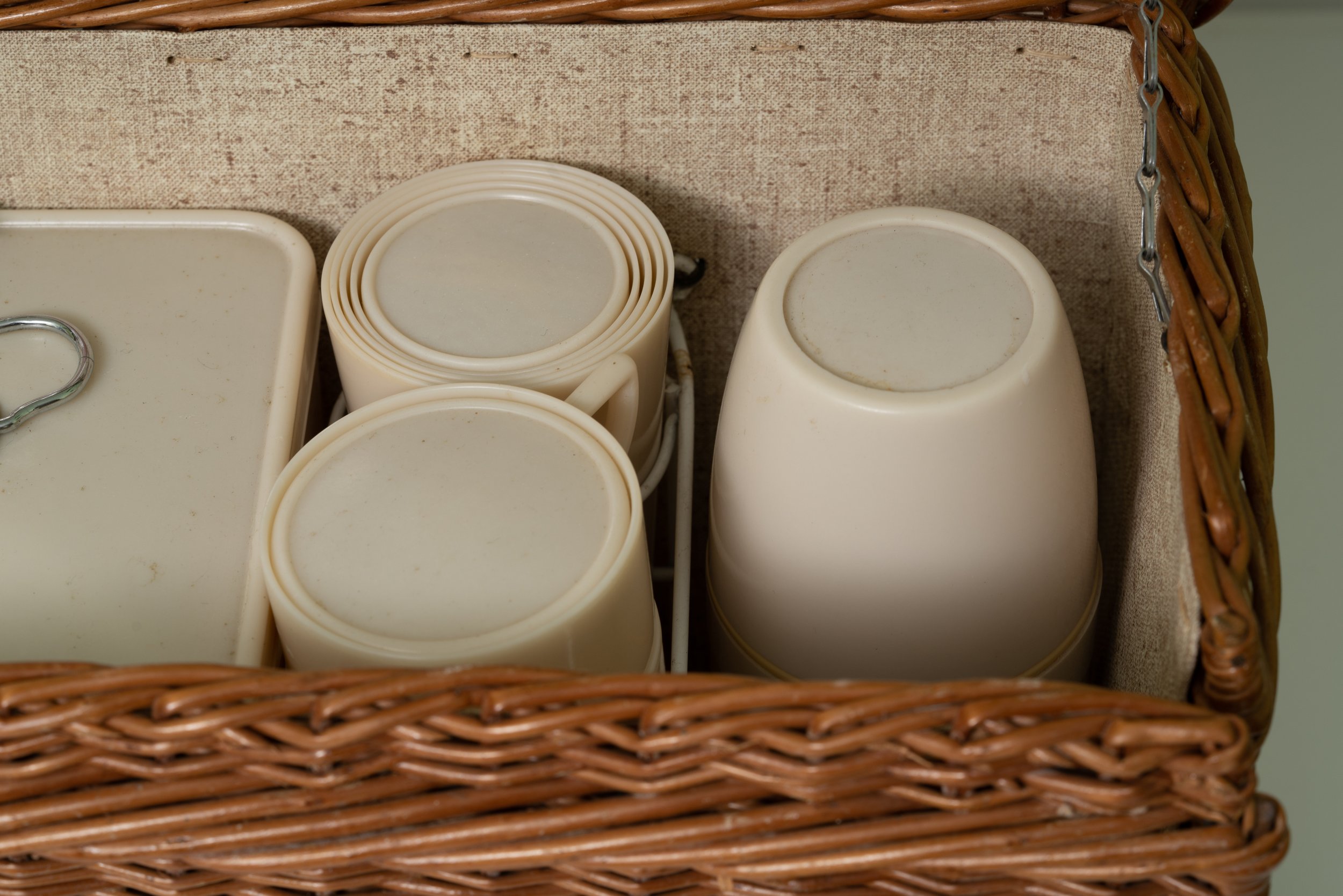 Image 1 of 6
Image 1 of 6

 Image 2 of 6
Image 2 of 6

 Image 3 of 6
Image 3 of 6

 Image 4 of 6
Image 4 of 6

 Image 5 of 6
Image 5 of 6

 Image 6 of 6
Image 6 of 6







Mid-20th Century Swedish Gustavsberg Argenta Art Pottery Bowl
Gustavsberg Argenta Swedish Bowl, having scalloped rim and silver floral decoration in the art deco style
The Wilhelm Kages' Argenta series was produced from the 1930's - 70's in the Gustavsberg studio.
Wilhelm Kages (Swedish 1889-1960), original designer of the argenta line studied at valand konstskola in gothenburg and later in copenhagen, where he met artist Gösta Adrian-Nilsson and became familiar with modern art. He studied graphic art in munich and began his artistic career by designing posters for theaters and exhibitions starting in the 1910's. He soon attracted the attention of the gustavsberg factory which sought out artists with new ideas. He accepted the offer from the factory, despite his lack of experience in ceramic production. His task was to add an artistic touch to the factory’s functional items. His first series, the Lilyblue, became a success at the liljevalchs exhibition in stockholm in 1917. After the exhibition, he was appointed artistic leader for gustavsberg. The argenta series, was produced starting in the 1930's with the series first being presented at the stockholm exhibition in 1930. The line was available in green but also in red, blue, brown, and celadon green. In all he produced thirty lines for gustavsberg. He worked with Stig Lindberg, starting in the 1940's.
3 1/2" high x 9 1/2" diameter.
3 1/2" high x 9 1/2" diameter.
Gustavsberg Argenta Swedish Bowl, having scalloped rim and silver floral decoration in the art deco style
The Wilhelm Kages' Argenta series was produced from the 1930's - 70's in the Gustavsberg studio.
Wilhelm Kages (Swedish 1889-1960), original designer of the argenta line studied at valand konstskola in gothenburg and later in copenhagen, where he met artist Gösta Adrian-Nilsson and became familiar with modern art. He studied graphic art in munich and began his artistic career by designing posters for theaters and exhibitions starting in the 1910's. He soon attracted the attention of the gustavsberg factory which sought out artists with new ideas. He accepted the offer from the factory, despite his lack of experience in ceramic production. His task was to add an artistic touch to the factory’s functional items. His first series, the Lilyblue, became a success at the liljevalchs exhibition in stockholm in 1917. After the exhibition, he was appointed artistic leader for gustavsberg. The argenta series, was produced starting in the 1930's with the series first being presented at the stockholm exhibition in 1930. The line was available in green but also in red, blue, brown, and celadon green. In all he produced thirty lines for gustavsberg. He worked with Stig Lindberg, starting in the 1940's.
3 1/2" high x 9 1/2" diameter.
3 1/2" high x 9 1/2" diameter.
Gustavsberg Argenta Swedish Bowl, having scalloped rim and silver floral decoration in the art deco style
The Wilhelm Kages' Argenta series was produced from the 1930's - 70's in the Gustavsberg studio.
Wilhelm Kages (Swedish 1889-1960), original designer of the argenta line studied at valand konstskola in gothenburg and later in copenhagen, where he met artist Gösta Adrian-Nilsson and became familiar with modern art. He studied graphic art in munich and began his artistic career by designing posters for theaters and exhibitions starting in the 1910's. He soon attracted the attention of the gustavsberg factory which sought out artists with new ideas. He accepted the offer from the factory, despite his lack of experience in ceramic production. His task was to add an artistic touch to the factory’s functional items. His first series, the Lilyblue, became a success at the liljevalchs exhibition in stockholm in 1917. After the exhibition, he was appointed artistic leader for gustavsberg. The argenta series, was produced starting in the 1930's with the series first being presented at the stockholm exhibition in 1930. The line was available in green but also in red, blue, brown, and celadon green. In all he produced thirty lines for gustavsberg. He worked with Stig Lindberg, starting in the 1940's.
3 1/2" high x 9 1/2" diameter.
3 1/2" high x 9 1/2" diameter.








